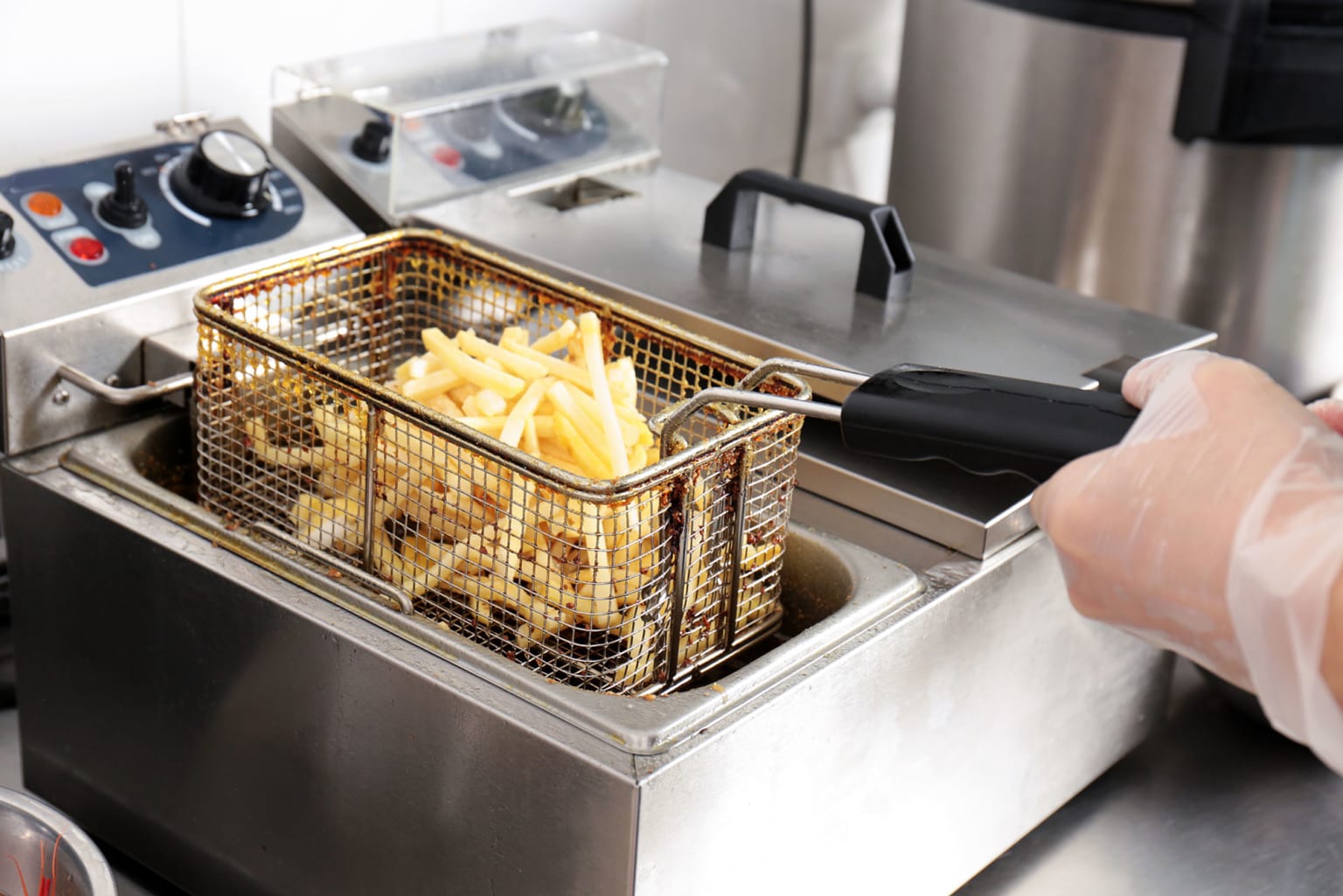Concession Stand Safety Tips: 12 Steps to Safe, Sanitary Food Service

The following information is intended to help develop a healthy and safe work environment for your league’s concession stand. Following these simple safety tips will help minimize the risk of foodborne illness and limit the chance of injury.
1. Simple Menu
Keep your menu simple, and keep potentially hazardous foods (meat, eggs, dairy products, protein salads, cut fruits and vegetables, etc.) to a minimum. Avoid using precooked foods or leftovers. Use only foods from approved sources, avoiding foods that have been prepared at home. Having complete control over your food, from source to service, is the key to safe, sanitary food service.
2. Food Thermometer
Use a food thermometer to check on cooking and holding temperatures of potentially hazardous foods. All potentially hazardous foods should be kept at 41⁰ F or below (if cold) or 140⁰ F or above (if hot). Ground beef and ground pork products should be cooked to an internal temperature of 155⁰ F, poultry parts should be cooked to 165⁰ F. Most foodborne illness from temporary events can be traced back to lapses in temperature control.
- Heating Food – Rapidly reheat potentially hazardous foods to 165⁰ F. Do not attempt to heat food in crock pots, steam tables, over a warming tray or other holding devices. Slow cooking mechanisms may activate bacteria and never reach killing temperatures.
3. Cooling and Cold Storage
Foods that require refrigeration must be cooled to 41⁰ F as quickly as possible and help at that temperature until ready to serve. To cool foods down quickly, use an ice water bath (60% ice to 40% water), stirring the product frequently, or place the good in shallow pans no more than 4 inches in depth and refrigerate. Pans should not be stored one atop the other and lids should be off or ajar until the food is completely cooled. Check temperate periodically to see if the food is cooling properly. Allowing hazardous foods to remain unrefrigerated for too long has been the number ONE cause of foodborne illness.
4. Hand Washing
Frequent and thorough hand washing remains the first line of defense in preventing foodborne disease. The use of disposable gloves can provide an additional barrier to contamination, but they are no substitutes for hand washing!
5. Health and Hygiene
Only healthy workers should prepare and serve food. Anyone who shows symptoms of disease (cramps, nausea, fever, vomiting, diarrhea, jaundice, etc.) or who has open sores or infected cuts on the hands should not be allowed in the food concession area. Workers should wear clean outer garments and should not smoke in the concession area. The use of hair restraints is recommended to prevent hair ending up in food products.
6. Food Handling
Avoid hand contact with raw, ready-to-eat foods and food contact surfaces. Use an acceptable dispensing utensil to serve food. Touching food with bare hands can transfer germs to food.
7. Washing Dishware
Use disposable utensils for food service. Keep your hands away from food contact surfaces, and never reuse disposable dishware. Wash in a four-step process:
- Washing in hot soapy water;
- Rinsing in clean water;
- Chemical or heat sanitizing; and
- Air drying
8. Ice
Ice used to cool cans/bottles should not be used in cup beverages and should be stored separately. Use a scoop to dispense ice; never use the hands. Ice can become contaminated with bacteria and viruses and cause foodborne illness.
9. Wiping Cloths
Rinse and store your wiping cloths in a bucket of sanitizer (example: 1 gallon of water and ½ teaspoon of chlorine bleach). Change the solution every two hours. Well sanitized work surfaces prevent cross-contamination and discourage flies.
10. Insect Control and Waste
Keep foods covered to protect them from insects. Store pesticides away from foods. Place garbage and paper wastes in a refuse container with a tight-fitting lid. Dispose of wastewater in an approved method (do not dump it outside). All water used should be potable water from an approved source.
11. Food Storage and Cleanliness
Keep foods stored off the floor at least six inches. After your event is finished, clean the concession area and discard unusable food.
12. Set a Minimum Worker Age
Leagues should be set a minimum age for workers or to be in the stand; in many states this is 16 or 18, due to potential hazards with various equipment.
This information was provided by Former Indiana District 10 Administrator George Glick, and is excerpted from “Food Safety Hints” published by the Fort Wayne-Allen County, Ind., Department of Health.